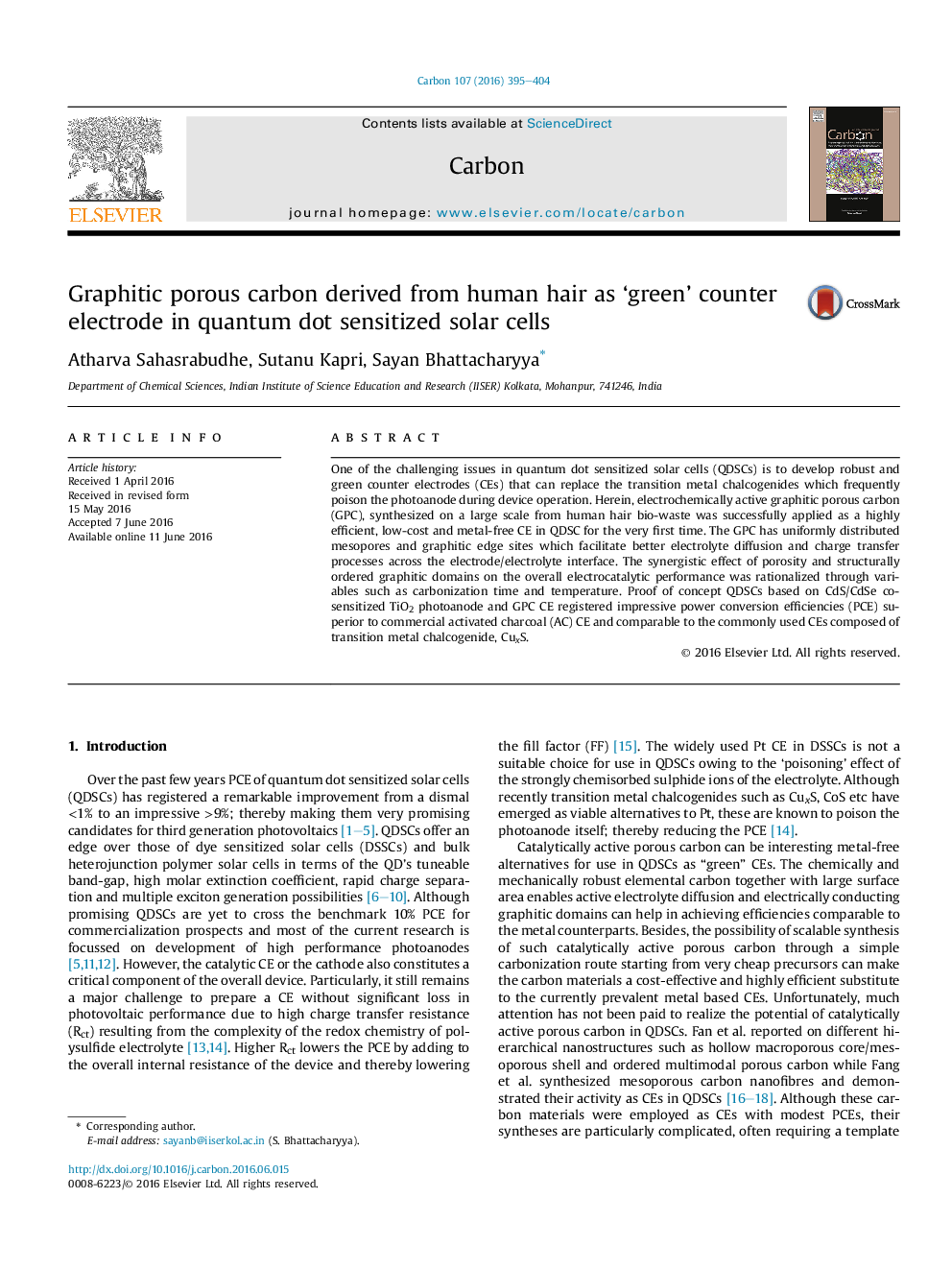| Article ID | Journal | Published Year | Pages | File Type |
|---|---|---|---|---|
| 1413120 | Carbon | 2016 | 10 Pages |
One of the challenging issues in quantum dot sensitized solar cells (QDSCs) is to develop robust and green counter electrodes (CEs) that can replace the transition metal chalcogenides which frequently poison the photoanode during device operation. Herein, electrochemically active graphitic porous carbon (GPC), synthesized on a large scale from human hair bio-waste was successfully applied as a highly efficient, low-cost and metal-free CE in QDSC for the very first time. The GPC has uniformly distributed mesopores and graphitic edge sites which facilitate better electrolyte diffusion and charge transfer processes across the electrode/electrolyte interface. The synergistic effect of porosity and structurally ordered graphitic domains on the overall electrocatalytic performance was rationalized through variables such as carbonization time and temperature. Proof of concept QDSCs based on CdS/CdSe co-sensitized TiO2 photoanode and GPC CE registered impressive power conversion efficiencies (PCE) superior to commercial activated charcoal (AC) CE and comparable to the commonly used CEs composed of transition metal chalcogenide, CuxS.
